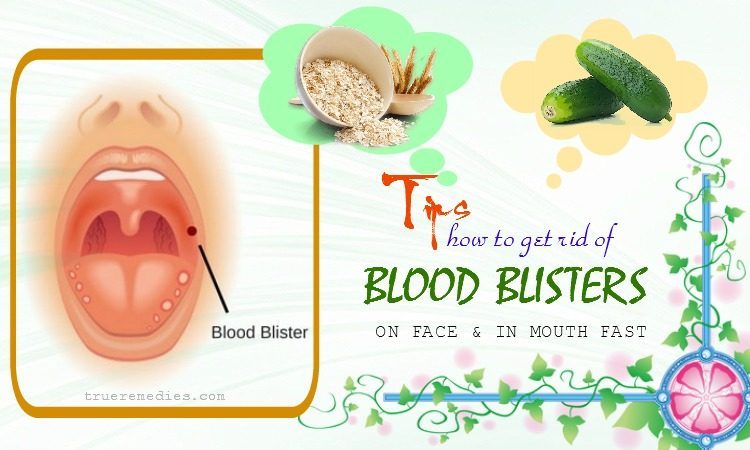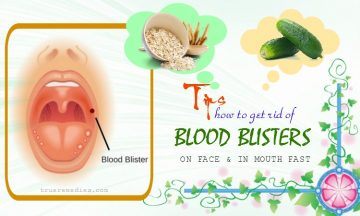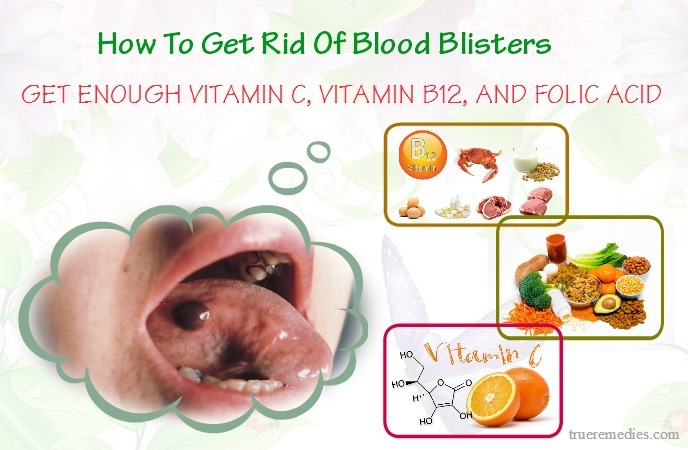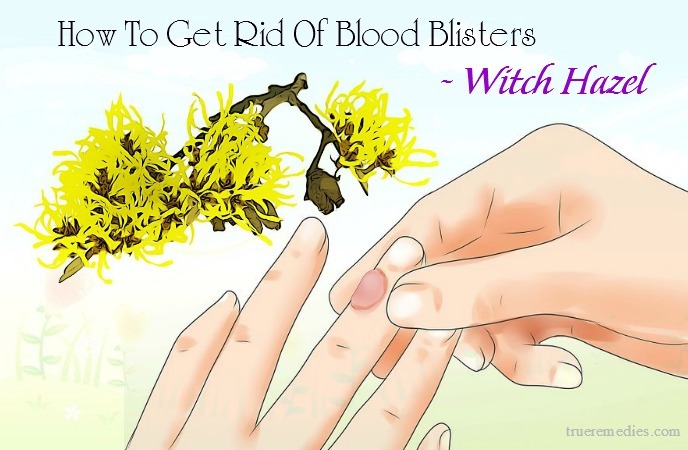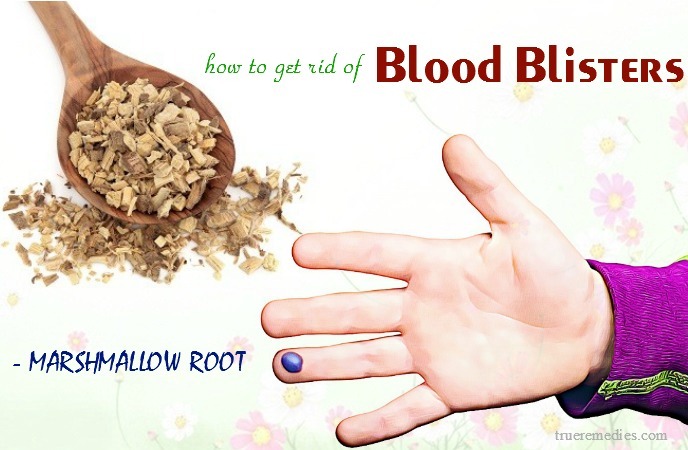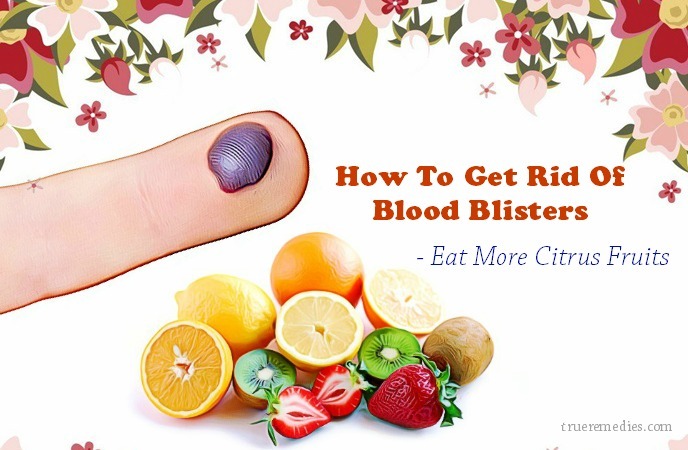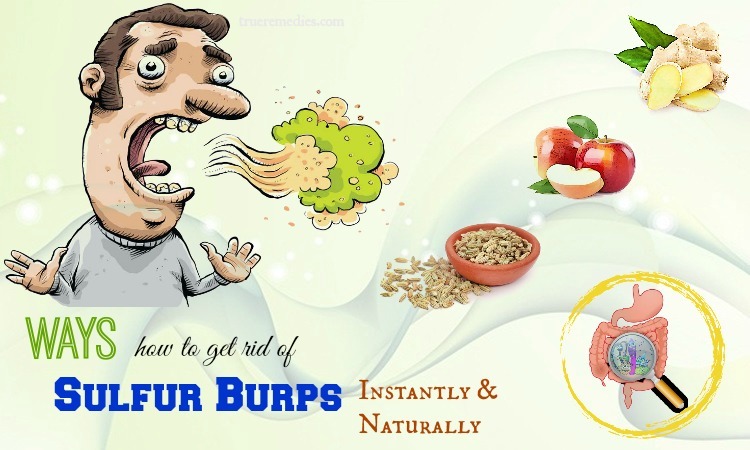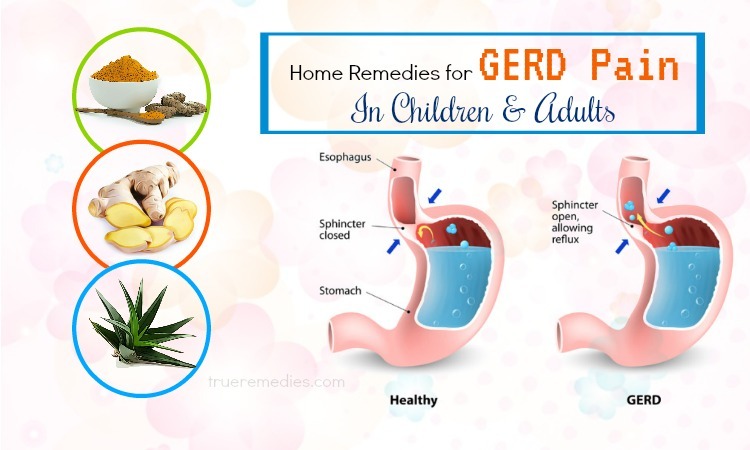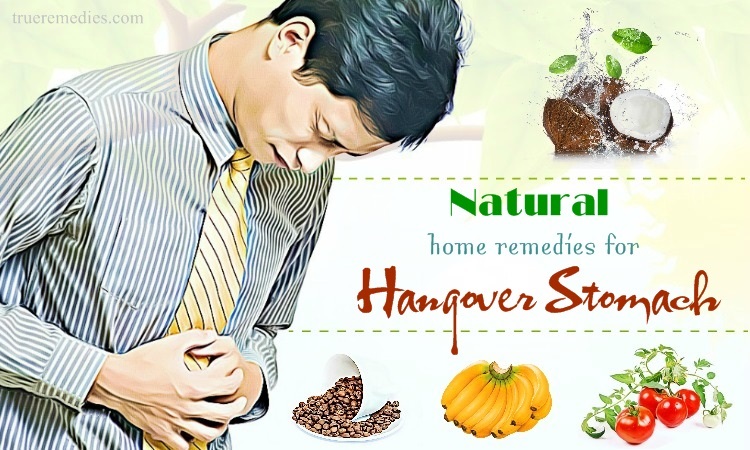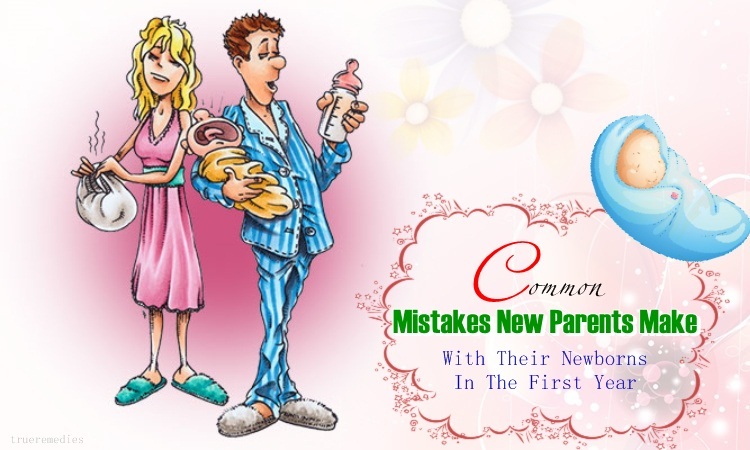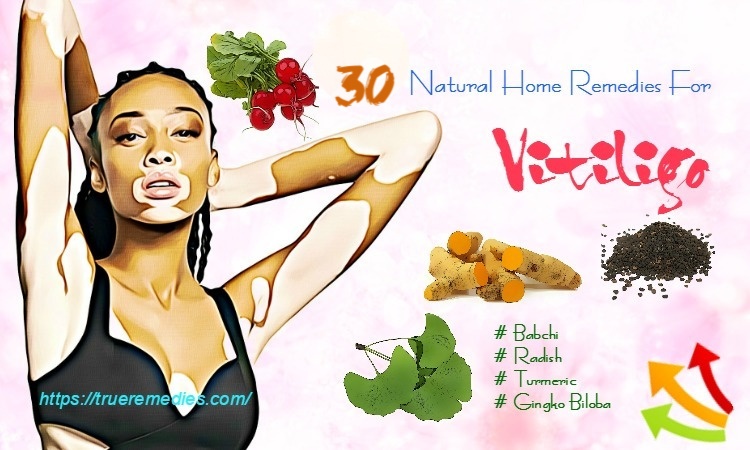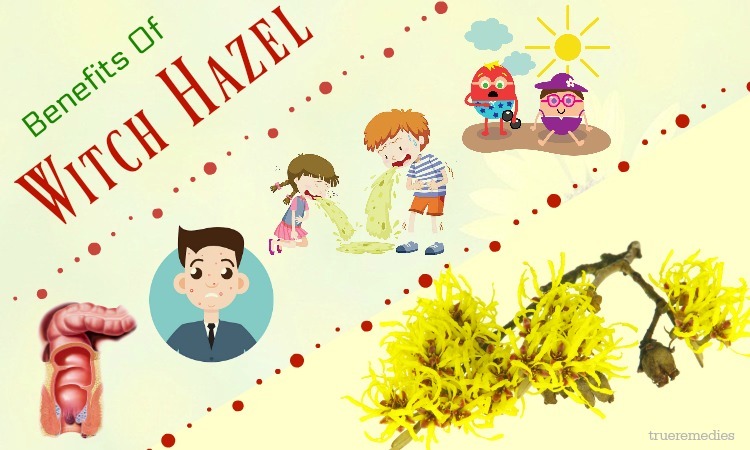updated: 11/19/2019
Contents
Blood blisters appear when the top layer (epidermis) separates from the skin layers below. This usually happens due to friction, heat, or some skin conditions. You will see blood in the blister. Many people try to remove such blisters by breaking them. However, this is what causes the condition to worsen.
I know that the reason you are reading this article of 10 Tips on How to Get Rid of Blood Blisters, in Mouth, on Face, Fingers & Toes is to learn how to treat this problem at home. But before that, you had better understand some basic information about it. Therefore, you can deal with it the right way.
What Are Blood Blisters?
Blood blisters are blisters on the skin that contain fluid and blood. The blood is marked by a bloody skin. They are very similar to friction blisters filled with liquid. They range in size from 1-1.3 cm. Due to some external effects, blood blisters are formed. Blood blisters usually form on the face, fingers, heel, and soles of the feet. However, they can also form on your hands when you ride your bike without gloves. We may also have this condition if we wear shoes that are too tight or do not wear socks when wearing shoes.
Blood blisters are not a life-threatening condition. They also do not hurt if you do not regularly rub them. However, many people still want to quickly remove these blisters because they affect the aesthetics and make you lose confidence, especially when blisters appear on the face [1] [2].
To get rid of blood blisters quickly, many people try to break them. However, this makes it easier for bacteria to enter the blisters, making the condition worse. If the blister breaks, you need to take special care to ensure hygiene. Be assured that the blood blisters may gradually disappear after 1-3 weeks. However, you can also speed up the process with a few tips. It is important that you accurately determine your condition as well as its causes for choosing the right treatment.
TrueRemedies Partner Solutions

Need a Help from the Leading Expert Online, Available 24/7?
They’re all here and ready to answer your questions online or by phone. Keep asking questions until you get the answer you need.
What Are Common Causes Of Blood Blisters?
The most common cause of this condition is the rubbing of clothing or sporting equipment with the skin over long periods of time. This will cause the top layer of the skin to separate from the bottom and be filled with liquid. Blood blisters appear when the skin is rubbing strongly and constantly, especially when you are just beginning some heavy work you have not done before, such as sawing, cutting trees, nailing, heavy carrying, walking, wearing too tight slippers or shoes.
When you see blood blisters due to hematoma on the skin, you need to know that blood (mainly red blood cells) is released from the blood vessels. Next, a series of sequential reactions will occur rapidly to create a hematoma at the site of the injury. This helps prevent bleeding as well as healing of the wound. Finally, normal blood flow will be repeated. The process is a very complex interaction of many factors such as blood vessels, platelets and clotting factors.
Changes in training or use of inadequate equipment can also cause friction and lead to blood blisters. Excessive action can cause blood to drain beneath the skin. Other factors may include damp skin, flat feet, and inflamed skin. In addition, there are other causes of blood blisters such as insect bites, burns, infections or contact with chemicals.
Other causes may include:
- Wear incorrect shoes or slippers
- Sweat of the foot causes additional friction
- Small injury from the pinching of the skin between two objects
- Serious numbness
- CKD
- Oral herpes
- Mouth cancer
- The amount of platelets in the body is too low
- Diabetes
- Angina Pectoris
- Extremely cold weather
- Exposure to stimulants
- Drug reaction. Many people suffer from blood blisters as a reaction to the drug. If you have blood blisters while using the medicine, please consult your doctor.
Blood blisters in the mouth usually involve another condition. If someone has blisters in their mouth, they need to see a doctor. Some of the causes of blisters in the mouth include:
- Mouth cancer
- Nutritional deficiency
- Excessive use of alcohol
- Allergy
- Bleeding disorders
- Accidentally biting on the lips
- Burns on the cheek
- Poor dentures
- Braces
What Are Common Symptoms Of Blood Blisters?
Signs and symptoms of blood blisters include redness and burning sensations. In addition, you may also have pain and itching in this skin area. Some people may feel pain in the skin around the blood blisters. Blood blisters appear as filled sacks, which contain fluid on the skin. They look very similar to friction blisters. Friction blisters contain transparent liquid. Unlike that, blood blisters contain red liquid. The liquid begins to become darker red over time.
You may experience other symptoms not mentioned. If you have any questions about the signs of the disease, please consult your doctor.
Who Is At High Risk Of Blood Blisters?
Anyone can suffer from blood blisters, especially athletes. It can occur at any age. However, those who regularly work hard and those with certain health conditions that we mentioned above are at high risk for this condition. You can control this problem by minimizing risk factors. Please see your doctor for more information.
When To See A Doctor?
Most blood blisters will gradually disappear without any treatment. However, see your doctor if you notice any of the following symptoms:
- Blood blisters are extremely painful
- The blood blisters are constantly coming back
- You think the blood blisters are infected. An infected blister can cause pain, redness and heat. Do not ignore these blisters, as they can cause impetigo and other complications, such as cellulitis or septicemia.
- You have blood blisters in unusual areas such as eyelids, in the mouth.
- Blood blisters appear after you have sunburn
- You think that they are allergic reactions after exposure to chemicals or other substances.
If you have any of these signs or symptoms or have any questions, please consult your doctor. Each person's condition is different, so please consult your doctor to select the most suitable option.
Above are some basic facts about blood blisters that you should know. Hopefully this information can help you get the most out of this problem. Now is the time to find out tips on how to get rid of blood blisters in mouth, on face, fingers and toes fast. Their safety and effectiveness have been proven by many people. Please take a look at TrueRemedies.com!
Top 36 Tips On How To Get Rid Of Blood Blisters In Mouth, On Face, Fingers, Toes Fast
1. Cold Compress
This is the first home remedy in this list of tips on how to get rid of blood blisters in mouth, on face, fingers and toes fast. As soon as you notice the blood blisters appear, you can apply this tip to quickly mitigate your condition [3]. Cold temperatures cause blood vessels in the affected area to contract, reducing swelling and stop internal bleeding. Inflammation will also be controlled quickly. You should do this within 48 hours after your blood blister appears to get the best effects from this tip. After this period of time, this tip has almost no effect [4].
To do this, you can apply these following steps:
- Rinse affected area
- Put ice cubes in a clean cloth bag
- Apply this bag to the affected area for about 20-30 minutes
After about 10 minutes, you can repeat the above steps again. Do not expose the ice cubes to direct contact with affected skin area as this can cause an ice burning sensation, which can aggravate your condition.
If you do not have ice cubes, you can use a cold gauze or cold vegetable bag to apply to your blood blisters. This has the same effect as using ice cubes. Frozen beans or small vegetables are convenient because they are flexible in shape. After each time applying, you can re-freeze and re-use them as ice packs. However, you should not eat food in these bags because they are used in an inappropriate way.
2. Get Enough Vitamin C, Vitamin B12, And Folic Acid
This is another must-try treatment in this list of tips on how to get rid of blood blisters on face. Vitamin C, vitamin B12, as well as folic acid help the body enhance immune system naturally and fight against the damage. As you know, a healthy immune system will help you prevent many injuries. Not only that, it also accelerates the treatment of diseases, including blood blisters. Therefore, you need to make sure your diet is rich in these vitamins and minerals to prevent blood blisters and help your skin recover faster.
- Vitamin C
Vitamin C is also known as ascorbic acid. It exists in our bodies in two forms, D and L. It engages in different activities of the body. When vitamin C is deficient, collagen synthesis is impeded, resulting in long-lasting wounds. This results in bleeding at varying degrees (capillary breakdown, subcutaneous haemorrhage, and benign bleeding) and vascular wall weakness. Vitamin C is found in oranges, lemons, grapefruit, green leafy vegetables, cabbage, watercress, mango, radishes, onions, sweet peppers, coriander, and guava.
- Vitamin B12
Vitamin B12 is a necessary vitamin for the body, especially for the skin. Most people can get enough vitamin B12 from the diet. Vitamin B12 is important for maintaining the health of your metabolism, blood cells and nerve cells. Severe vitamin B12 deficiency can cause anemia, problems with the stomach / intestines and permanent neurological damage. You can find a lot of vitamin B12 in cashew nuts, almonds, eggs, seafood, and milk.
- Folic Acid
Folic acid is a B-group vitamin (B9) that plays a major role in the production of red blood cells, spinal canals and the brain. Folic acid is found in many foods such as tofu, red beans, oranges, avocados, tomatoes, leafy vegetables, cabbage, spinach and rice.
3. Aloe Vera
This remedy is one of little – known tips on how to get rid of blood blisters on face. Aloe Vera contains many vitamins, minerals, amino acids, and enzymes. These components are necessary for the development of skin cells. The glycoproteins in Aloe Vera have good anti-inflammatory and anti-allergy properties, so it is often used to heal wounds. In addition, Aloe Vera also helps to detoxify the body by enhancing metabolism in the liver and kidneys, which eliminates toxins in the body. Not only that, the ingredients and trace elements in Aloe Vera also help to prevent scarring caused by blood blisters.
To use Aloe Vera to treat blood blisters, you can follow one of these following methods:
Method 1. Only Aloe Vera
To apply this method, please follow these steps below:
- Cleanse the affected skin area
- Apply Aloe Vera gel to this area
- After about 20-30 minutes, gently wash your skin with warm water
You can implement this method 3 times a day to get the best results.
Method 2. Aloe Vera And Parsley
To apply this method, please follow these steps below:
- Mix Aloe Vera gel and parsley juice to make a thick mixture
- Cleanse the affected skin area
- Apply this mixture to this area
- After about 20-30 minutes, gently wash your skin with warm water
Please apply this method 2-3 times a day until your condition is completely treated.
Method 3. Aloe Vera And Honey
To apply this method, please follow these steps below:
- Mix Aloe Vera gel and honey in a ratio of 1:1
- Cleanse the affected skin area
- Apply this mixture to this area
- After about 20-30 minutes, gently wash your skin with warm water
You should implement this method 2-3 times a week.
Note: You may be allergic to Aloe Vera. Therefore, you should try to apply the Aloe Vera gel on the healthy skin in the forearm to check the reaction of the body.
4. Cucumber
The next treatment in this list of tips on how to get rid of blood blisters on face is using cucumber. Cucumber contains many vitamins and minerals which are very beneficial to the skin. Cucumber's moisturizing ability is one of the highlights of this fruit. Not only that, it also helps soothe the blisters on the skin, so you do not feel pain whenever you encounter this condition. Vitamin C content in cucumber helps to improve the skin's ability to heal and to restore scarring on the skin. Therefore, the use of cucumber to treat blood blisters is what you should do.
To use cucumber to treat blood blisters, you can follow one of these following methods:
Method 1. Just Cucumber
To apply this method, please follow these steps below:
- Crush 2-3 cucumber slices
- Cleanse the affected skin area
- Apply crushed cucumber to this area
- After about 20-30 minutes, gently wash your skin with warm water
Implementing this method twice a day is what you should do to quickly treat your condition.
Method 2. Cucumber And Honey
To apply this method, please follow these steps below:
- Crush 2-3 cucumber slices
- Add ½ teaspoon of pure honey and stir well
- Cleanse the affected skin area
- Apply this mixture to this area
- After about 20-30 minutes, gently wash your skin with warm water
Let’s do this method twice a day to get the best results.
Method 3. Cucumber And Lemon Juice
To apply this method, please follow these steps below:
- Crush 2-3 cucumber slices
- Add ½ teaspoon of lemon juice and stir well
- Cleanse the affected skin area
- Apply this mixture to this area
- After about 20-30 minutes, gently wash your skin with warm water
5. Apple Cider Vinegar
This sounds strange when it comes to tips on how to get rid of blood blisters on face, bit it is really effective. Apple cider vinegar is mildly acidic so it can remove dirt, sebum and dead cells very well. At the same time, apple cider vinegar also has antibacterial and antifungal properties, rapidly improving your blood blisters problem [5].
In addition, the composition of apple cider vinegar also contains a small amount of vitamin which can moisturize the skin. For the treatment of blood blisters, we tend to use antibiotics. Using antibiotics on a regular basis is not a perfect idea and some antibiotics also cannot handle all types of bacteria. Using natural remedies to boost immunity is a good idea. Based on some of the strongest natural antibiotic ingredients of apple cider vinegar, your condition will quickly improve.
Besides consuming 2-3 teaspoons of apple cider vinegar every day, to use apple cider vinegar to treat blood blisters, you can follow one of these following methods:
Method 1. Just Apple Cider Vinegar
To apply this method, please follow these steps below:
- Cleanse the affected skin area
- Apply apple cider vinegar to this area and massage gently
- After about 20-30 minutes, gently wash your skin with warm water
You can do this 2-3 times a day.
Method 2. Apple Cider Vinegar And Honey
To apply this method, please follow these steps below:
- Mix apple cider vinegar with honey in a ratio of 1:1, stir well
- Cleanse the affected skin area
- Apply this mixture to that area and massage gently
- After about 20-30 minutes, gently wash your skin with warm water
Please apply this method 2-3 times a day until your condition is completely treated.
Method 3. Apple Cider Vinegar And Garlic
To apply this method, please follow these steps below:
- Crush 2-3 fresh garlic cloves
- Add 1 teaspoon of apple cider vinegar, stir well
- Cleanse the affected skin area
- Apply this mixture to this area and massage gently
- After about 20-30 minutes, gently wash your skin with warm water
You should apply this method once a day until you get the expected results.
6. Epsom Salt
Among homemade tips on how to get rid of blood blisters, Epsom salt is really worth a try due to its excellent merits. It could be used to decrease the swelling and pain associated with blood blisters. This extraordinary mineral has anti-inflammatory properties to heal skin issues like blood blisters. It draws the toxins and fluids out of blisters, thereby boosting the recovery [6].
If your blood blisters are on your feet, soak your feet in the mixture between Epsom salt and water (as the ratio of 1:3). Repeat this routine 3 times per day to get good results. You can also apply an Epsom salt compress on your affected areas.
7. Witch Hazel
In witch hazel, there is tannins, making it one of the most valuable astringents. It dries out the blisters while providing a fast relief from swelling, inflammation and pain.
Also, it can relieve black eye bruises. This is considered a fantastic remedy for blood blisters in mouth and on face in no time, not to mention other skin conditions like abrasions and cuts [7].
To use witch hazel for blood blister removal, follow these steps:
- Soak a sterile cotton ball in witch hazel and apply it over your affected areas
- Wait for several minutes before removing it off
- Repeat this routine a few times per day for 2 weeks.
8. Cucumber
When it comes to natural ways on how to get rid of blood blisters, cucumber is among the easiest options. It has a mineral, named silica, which can strengthen connective tissue of the skin. Besides, the anti-inflammatory flavonols in cucumber like cyclooxygenase 2 and fisetin can fight off pro-inflammatory enzymes and heal your blood blisters [8].
If applying cucumber on affected skin, it will reduce swelling, pain and inflammation. But you should chill thick cucumber slices first before the application. Repeat this method a few times per day for several days. Also, drinking freshly squeezed cucumber every day also helps with this condition.
9. Ginger Extracts
Being a traditional herbal spice coming from the Zingiberaceae family, ginger has long been used to deal with different skin conditions. It consists of a complex phytochemistry, which stands behind its exceptional medicinal properties like anti-inflammatory and antioxidative. These properties help to reduce pain, swelling caused by blisters [9]. If you are looking for tips on how to get rid of blood blisters in mouth, then ginger is your best bet.
- Extract 2-4 tablespoons of fresh ginger juice
- Dip a cotton ball into the juice and apply it over your affected area
- Leave it there to let it dry
- Repeat this method 3-4 times per day to get speedy recovery
10. Tea Tree Oil
Tea tree oil originates from the tea tree plant, featuring a pale yellow color along with camphoreous odor [10]. This essential oil has antibacterial and antiseptic components that help to dry out the blisters fast.
- Just simply mix 8 drops of tea tree oil with 4 drops of olive oil
- Dip a cotton ball into this mixture and apply it over your affected skin
- Allow it to dry out naturally
- Reapply this method twice per day for a week
Note: Do not using this essential oil for pregnant or breastfeeding women.
11. Sandalwood
Sandalwood is often used to relieve anxiety and induce alertness. This yellow aromatic wood could retain its fragrance for a long time. It has more to offer in addition to its sweet woodsy scent.
The remarkable medicinal properties of sandalwood are great for healthy skin [11]. It can assist in treating some skin conditions like blood blisters. Sandalwood has the ability of absorbing the heat from your blisters, thereby boosting up healing process. Furthermore, sandalwood can lessen pain and inflammation accompanied by blisters in mouth.
- Mix 1 tablespoon of sandalwood powder with 1-1 ½ tablespoon of rose water to create a t thick paste
- Apply this paste over your affected skin, keep your mouth open
- Rinse your mouth off with cool water after it dries out
12. Turmeric Powder
The key active compound in turmeric is curcumin. It has strong antibacterial and anti-inflammatory properties. As a result, it can work against pain and swelling caused by blood blisters.
Here are some ways to use this ingredient for blood blister removal:
Method 1:
- Mix some honey or rose water with 1 teaspoon of turmeric powder
- Apply it over your blisters
- Wash it off with tepid water and allow it to dry out naturally
Method 2:
- Add 1 teaspoon of organic turmeric to a glass of warm milk
- Have this milk before your bedtime
Method 3:
- Mix several drops of tea tree oil with 1 teaspoon each of olive oil, aloe vera gel and turmeric powder
- Apply it over your affected areas and leave it there for 15 minutes
- Wash it off with warm water
- Repeat this routine everyday
13. Tea Bags
Not only is tea a great drink for you to start your day, but it also possesses amazing medicinal properties. It astringent could soothe inflammations and fasten up your recovery from blisters. Not to mention the anti-inflammatory compounds, tea has catechins, phytonutrients, flavonoids and tannic acids which can alleviate swelling and regenerate damaged tissues [13]. Tea like black or green tea has anti-inflammatory properties thanks to their flavonoids. This effect could help with inflammation reduction [14], thereby healing blood blisters. Even, it has the ability of protecting skin, inhibiting the blisters from getting worse.
- Soak a tea bag in warm water for several minutes
- Remove it off and let it cool down
- Put the tea bag on your blisters
- Repeat this method a few times per day
14. Garlic
Garlic cloves are powerhouse of antibacterial and antifungal properties. The essential oil of this spice has accilin component, which can treat blood blisters effectively [15]. Garlic oil has essential properties, contributing to the fast recovery of your blisters. Furthermore, its anti-microbial properties is helpful in disinfecting your affected areas, preventing any potential infection [16]
- Smash 4 garlic cloves into a good paste
- Apply the paste over your blisters
- Leave it there for 15 minutes before rinsing it off
- Repeat this routine 3 times per day till you get good results
15. Lavender Oil
Lavender oil can sedate the pain and swelling accompanied by blisters [17]. Also, it is able to speed up the recovery of such skin illnesses [18].
- Mix 1-2 drop each of lavender oil with almond oil
- Pour this mixture onto the gauze
- Place the gauze on your blood blister and use a bandage to secure it
- Remove it off after about 1 hour
- Repeat this routine twice per day
16. Neem
Neem is a common herb in Indian, Bangladesh, Sri Lanka, and Pakistan. The medical term of this herb is Azadirachta indica. It has been used to relieve blisters and boils and speed up the healing process. Its antibiotic and antimicrobial properties are main keys for a variety of therapeutic and medical purposes. The fresh neem leaves work best if used topically as it is easy to make a paste from neem leaves [19].
Take some neem leaves to grind with water. After getting a smooth paste, apply it over your affected skin. Remove it after the paste dries or as long as possible. Rinse it off afterwards.
17. Clay
Clay is beneficial for many skin problems, such as acne, insect bites, and blisters. For insect bites, it draws out the venom as well as other infectious compound left in the body.
However, you should opt for virgin clay like green clay (aka bentonite clay) to use.
- To make clay pack for blood blister relief, follow these guidelines:
- Mix water (or rose water) and clay in a bowl till you get a smooth paste
- Use a muslin cloth to apply the clay onto the affected areas (including the surrounding area)
18. German Chamomile
In regard to learning how to get rid of blood blisters on face and in mouth, German chamomile is little-known. This white colored flower is often used to make tea and handle some skin conditions such as acne, rashes, blisters, etc.
The flowers of German chamomile have leukotrienes and prostaglandins, making it a great anti-inflammatory agent. The results were compelling in compared with the synthetic anti-inflammatory drug named benzydamine.
You should use dried chamomile to make a paste, then apply onto your problematic areas to relieve pain and boost the recovery. For faster results, add some drops of essential oil into the paste. This will add extra effects to fight against notorious bacteria, Bacillus subtilis, staphylococcus aureus, and fungi candida albicans. They are 3 major guilty parties of the majority of skin conditions.
19. Marigold
Calendula is a perennial and annual herbaceous flower deriving from the daisy family of Asteraceae. It is also known as marigold and common to Western Europe, Asia, Mediterranean, and Macronesia. It has anti-inflammatory properties, making it one of the best flowers to cure blood blisters. Triterpene saponins, triterpene alcohols and flavonoids are main active compounds found in this flower, making it favorable for medicinal uses.
However, this plant should not be used for children under 6 years old. You can find this flower as an ingredient in many anti-inflammatory ointments, but you can totally make them at home. Follow these instructions:
- Melt 4 ounces of coconut oil
- Add 10-12 drops of calendula essential oil or extract into it
- Put this mixture into the fridge overnight and apply onto your affected areas the next morning
20. Marshmallow Root
Scientifically known as Althaea officinalis, marshmallow root is native to Europe. This plant has some active compounds, including glucans, galacturonorhammans, arabinans, mucilage polysaccharides – arabinogalactans. It has anti-inflammatory properties, so it is helpful in treating eczema, dermatitis, furunculosis, and blisters [20].
You can use marshmallow root to make a decoction for blister removal.
- Mix equal parts of marshmallow root and water in a pot
- Boil them up and let it simmer for 8 hours
- Mix it with 6 ounces of melted coconut oil
- Put them in the refrigerator
- Apply it over your blisters to lessen the irritation and itch
21. Oats
Also called as Avena Sativa, oat is native to Mediterranean region, but also cultivated in Asia, North America, and Europe. The active ingredients in oats are proteins, flavonoids, mucilage polysaccharides, which are particularly good for overall health. Its anti-inflammatory property is thanks to the releasing of arachidonic acid from the phospholipids and the subsequent metabolism into leukotrienes and prostaglandin. Nonetheless, people with dermatitis along with atopic people should avoid using oats on skin due to possible skin reactions.
To take full advantage of components in oats, you should use the oatmeal paste. Grind plain oatmeal and add some water to create a smooth paste. Apply it over your blood blisters to reduce irritation and inflammation.
22. Echinacea Purpurea
There are 10 types of echancea plant and echinacea purpurea is used widely thanks to its therapeutic properties. This herb is native to the U.S with different medicinal uses, such as decreasing skin rashes, healing wounds, relieving common cold, and soothing sore throats. This herb consists of caffeic acid derivatives, alkamides, cichoric, caftaric, and chlorogenic acids. They are shown to have anti-inflammatory effects. Nevertheless, this plant is not recommended for pregnant and breastfeeding women, people with atopic diseases, and children under 12 years old. Also, do not use this herb on skin for over 8 weeks. Just 3-4 weeks are enough to realize whether or not it is working for your condition.
To use this herb, express its juice from fresh leaves to create a mother tincture. Use this fluid topically on your blisters to relieve itching and inflammation.
23. Comfrey Root
Comfrey root is a shrub native to Asia, North America, and Europe. It is used for more than 2000 years by the Japanese to deal with muscle sprains, burns, bruises, and joint inflammation. Major active ingredients in comfrey root are allantoin, rosmarinic, salicylic, mucilage polysaccharides, glycopeptides and caffeic acid. Two of these components have anti-inflammatory properties. According to studies, comfrey root extract should just be used externally due to the pyrrolizidine alkaloid content, which is carcinogenic, hepatotoxic, and mutagenic and may lead to infections. Also, avoid using this ingredient for over 4-6 weeks annually due to the similar reason.
Apply comfrey root extract onto your blisters and the surrounding skin to alleviate inflammation and boost healing process.
24. Yarrow
Yarrow has essential oils with tannins, guaianolide, flavonoids, and sesquiterpene lactones. These substances showed anti-inflammatory effects, so yarrow can help with wounds, skin inflammations and blood blister healing. Yet, it may cause allergic contact dermatitis in some people.
You can make use of yarrow essential oil bought from supermarkets. Simply apply it over your affected area 2 times per day to harness its merits.
25. Ribwort
Being a flowering plant, ribwort is known by different names worldwide, such as ribwort plantain, narrowleaf plantain, lamb’s tongue, English plantain, and ribleaf. It has many active ingredients, including phenylethanoids named acteoside, mucilage polysaccharides, aucubin, catalpol, tannins, etc. This plant has astringent properties due to tannins, and soothing and emollient properties due to the present mucus. Phenylethanoids are responsible for its anti-inflammatory properties.
Ribwort leaves could be used for cataplasms and, supporting wound healing, and alleviating skin inflammation.
Mash the leaves and apply it over your blisters. Let it dry. After it dries out, rinse it off with water. Repeat this routine twice per day.
26. Sage
This herb is native to Mediterranean region and often used to deal with different medical uses, particularly stomach-related conditions such as gastritis, flatulence, gas pain and bloating, heartburn, diarrhea, etc. Other uses include reducing the production of saliva, memory loss, depression, and Alzheimer’s disease. In addition, it also helps to fight against irritation and inflammation associated with nasty blood blisters. The essential oil, phenolic acids, triterpenoids acids, and catechin-type tannins make sage a wonderful ingredient with bactericidal, anti-inflammatory, and astringent properties. Sage showed excellent antifungal property as well. However, do not use this herb for children under 18 years old, pregnant and breastfeeding women.
The oil of sage is used widely as a traditional medicine. Apply a few drops of this oil on your blisters to remove blood blisters, and prevent any fungal and bacterial infections occurring in the affected areas.
27. St John’s-Wort
Despite being native to North America, Asia, Europe and Africa, this plant is also found in most continents in the world. There are some preeminent compounds in St. John’s-wort, which are amentoflavone, hyperoside, adhyperforin, and hyperforin. They make this herb great for anti-inflammation. Even, its anti-inflammatory property is stronger than indometacin – a commercial ointment. Similar to sage, do not use this herb continually on skin of children under 18 years old.
Make your own extract of this herb by using fresh or dried leaves by following these steps:
- Prepare a mason jar, mix 1 part of a macerate of the leaves with 4 parts of a vegetable oil
- Place the jar in a place exposed to sunlight for about 2-7 days
- Shake it twice per day or more
As a result, you will have compounds of St. John’s wort leaves mixed with the oil. Apply this mixture over your affected skin for good results.
28. Evening Primrose
This is a herbaceous flowering plant and scientifically kown as Oenothera. People also call it as sundrops or suncups. The seeds of evening primrose have 25% fatty acids, in which triglycerides are the main components. This plant is used to relieve pain due to atopic dermatitis thanks to the availability of prostaglandin – an anti-inflammatory agent. The oil of evening primrose is used successfully for eczema treatment. It was estimated that about 30-45% of the scaling and itching caused by eczema was reduced when applying this oil.
Nonetheless, people who used to suffer from epilepsy or schizophrenia should consult their doctors before using this herb to avoid allergic reactions. Also, pregnant or breastfeeding women and children should not use or use this herb with the supervision of a doctor.
29. Oak Bark
Oak bark is found in Asia, North America, North Africa and Europe. It has tannic acids, which can fight off insects and fungi. English Oak is the most common oak and its extract has anti-bacterial property. Thus, it is used to deal with frostbite, eczema, dermatitis, and other skin diseases.
You can use it in various ways, be it bathing, topical application, or poultices to gain different effects. Children under 18 should not use this herb for over 1 week without the permission of a doctor.
Make a tea or cold compress from oak bark to relieve inflammation caused by blisters or boils. To do it, follow these guidelines:
- Prepare a pound of dried oak bark
- Boil 4 cups of water and add the prepared oak bark into
- Let it simmer for 1 hour before straining via a strainer
- Use this solution as a compress or while bathing after it cools down
30. Walnut Leaf
Walnut leaf, one of lesser-known tips on how to get rid of blood blisters, is scientifically known as Juglans regia. It possesses anti-inflammatory property and this effect is as strong as that of indomethacin – a commercial drug used for oedema.
Also, walnut leaf has the ability to prevent excessive perspiration of feet and hands. People in some countries also use this herb to treat scalp itching and dandruff, superficial burns, and sunburns.
You can boil 4 to 5 cups of water, then add 1 cup of fresh walnut leaves or ½ cup of dried leaves into. Allow it to simmer for 15 minutes and strain this mixture. Let it cool down and use this concoction while having bath or as a compress.
31. Linseed
Also known as flax seed, linseed is native to India, Argentina, Morocco, and Turkey. Linseed oil is often used for numerous purposes. It is considered one of the healthiest oils with affordable price. The oil of linseed contains mainly galacturonic acid which has anti-inflammatory, demulcent and emollient properties. This ingredient is effective in reducing skin inflammation, treating furunculosis when used as a hot compress or warm poultice.
To make linseed poultice, add 1 cup of linseed flour in a cup of hot water. There, you have a thick paste and apply it over your problematic whilst it is still warm.
To make hot compresses, prepare a couple of rectangular pieces of cloth. Fill flaxseeds or linseeds full of the compress. Then, make a pillow by sticking the cloth pieces together. After the flaxseeds are full of the pillow, seal the opening. Heat this homemade pillow in the microwave prior to using it on your inflamed skin.
32. Eat More Citrus Fruits
The next one in this list of tips on how to get rid of blood blisters on face is drinking vitamin C. Some people are prone to blood blisters due to lack of vitamin C. Vitamin C rich diet can help you fight this condition. Vitamin C also helps thicken blood cells. Vitamin C is one of many substances involved in the body's antioxidant defense system. Antioxidants (vitamin E, beta-carotene, vitamin C) can convert oxidizing agents into harmless substances and excrete them in the urine.
Vitamin C combines many free radicals and removes them from the body. As a result, the possibility of infection with blood blisters is reduced to the lowest level. Therefore, you should eat more foods rich in vitamin C, such as citrus fruits, or you can also take vitamin C supplements sold in pharmacies and functional food stores.
33. Parsley
Parsley contains a rich source of vitamin A, vitamin C, vitamin K, vitamin B and other important minerals for the body such as calcium, potassium, iron, manganese, and sodium. Parsley also contains an antibiotic compound called Dodecenal which has been shown to be twice as effective as antibiotics.
The Omega – 3 and Omega – 6 fatty acids contentfound in parsley are quite high. Omega-3 fatty acids are like a protective layer created to protect the body against inflammatory. Omega-6 can help the injuries recover quickly. Because parsley is rich in vitamins, minerals and has great healing effects, you should use parsley as a treatment of blood blisters.
To use parsley to treat blood blisters, you can follow one of these following methods:
Method 1. Just Parsley
To apply this method, please follow these steps below:
- Crush a handful of parsley
- Cleanse the affected skin area
- Apply crushed parsley to this area
- After about 20-30 minutes, gently wash your skin with warm water
You should apply this method once a day to get the best results.
Method 2. Parsley And Olive Oil
To apply this method, please follow these steps below:
- Crush a handful of parsley
- Add olive oil, stir well
- Cleanse the affected skin area
- Apply this mixture to this area
- After about 20-30 minutes, gently wash your skin with warm water
Please apply this method once a day.
Method 3. Parsley And Honey
To apply this method, please follow these steps below:
- Crush a handful of parsley
- Add olive oil, stir well
- Cleanse the affected skin area
- Apply this mixture to this area
- After about 20-30 minutes, gently wash your skin with warm water
Implementing this method once a day is waht you should do to quickly treat your problem.
34. Apply Ointments
No wonder, this is definitely one that should be mentioned in this list of tips on how to get rid of blood blisters on face. Use a cotton swab to apply polymyxin B or antibiotic ointment to blood blisters. This is to prevent blisters from becoming infected.
Many people are allergic to antibiotic ointment. If the skin becomes red and swollen or itchy, you should stop using ointment. If you are allergic to antibiotic ointment, you can use petroleum jelly. You should use a completely newpetroleum jelly tube because the used tube for other purposes may have been contaminated and it may cause infection for the blood blisters.
35. Protect Your Blood Blisters
Protecting your blood blisters is the next remedy in this list of tips on how to get rid of blood blisters on face. When you have to go out, protect blood blisters to keep them from breaking or getting infected. You can use moleskin patches to protect them.
If a blood blister appears on your legs, you should wear comfortablesocks and shoes. Do not keep wearing shoes that create blood blisters if you do not want them to get worse.If the blood blister appears on your hands, wear gloves to protect it when you wash the dishes, do laundry, or do other work. This is really essential to you.
36. Eat Plenty Of Pineapple And Papaya
Eating plenty of pineapple and papaya is the last remedy in this list of tips on how to get rid of blood blisters on face. With a large amount of vitamin C and A, pineapple and papaya can help the immune system in your body better. If you eat pineapple and papaya regularly, you can reduce the risk of infection. Pineapple and papaya contain a digestive enzyme called bromelain that functions to break down proteins that cause blood clots and fluid in the tissues. Therefore, you should eat more pineapple and papaya to absorb bromelain and help your body eliminate blood blisters. You can make them into very good vitamins. enjoy them!
How To Get Rid Of Blood Blisters – Additional Tips And Precautions
- A little precautions and awareness is necessary to prevent you from getting your own fingers injured the next time you close the drawer or door.
- Do not fiddle with blisters or try to pop them out as it may result in infections.
- Keep your affected skin surface intact by wrapping it with a medical bandage or cotton gauze. This will allow the blisters to dry out without leaving scars.
- Cleanse the blisters regularly using cool water to prevent irritants or pollutants away from them.
- Use mouthwash as an antiseptic to disinfect your affected area.
- Avoid salty and spicy foods during your treating process to avoid irritating the problem and prolong the healing process.
- Avoid citrus fruits like orange, grapes and lemon when you have blood blisters because they may worsen your problem.
- Avoid drinking alcohol or smoking to lower your body heat.
- If the blisters are caused by friction from dentures, then you should cease wearing the dentures till your problem is healed.
- If you suspect that your blisters are not due to injury, you had better seek medical advice.
There, you have discovered best tips on how to get rid of blood blisters in mouth, on face, fingers and toes and its inconvenience. As you can see, they are all very safe. Many people have successfully treated this condition thanks to them. You can also get this.If you have any contributing ideas about our article of “Top 36 Tips On How To Get Rid Of Blood Blisters On Face” introduced in How To Category, do not hesitate to drop your words below this post. We will answer as soon as we could.

